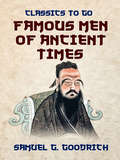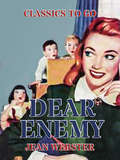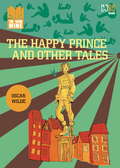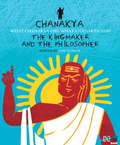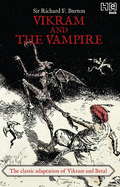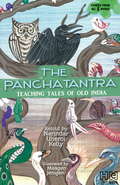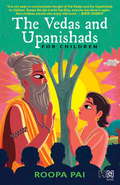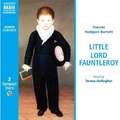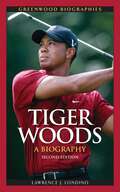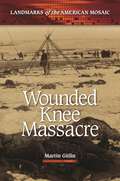- Table View
- List View
Famous Men of Ancient Times: By The Author Of Peter Parley's Tales (Classics To Go)
by Samuel GoodrichExcerpt: "Confucius - From Famous Men of Ancient Times by S. G. Goodrich.... This greatest of Chinese philosophers was born in the petty kingdom of Lu, now the province of Shantung, in the year 549 B. C.-the same year that Cyrus became king of the Medes and Persians. The Chinese, in their embellishments of his history, tell us that his birth was attended with heavenly music, filling the air; that two dragons were seen winding over the roof; that five old men appeared at the door, and after consulting together, suddenly vanished; and that a unicorn brought to his mother a tablet in his mouth. It is also related that when he was born, five characters were seen on his breast, declaring him to be "the maker of a rule for settling the world." These and other marvels are a part of the established biography of the philosopher, as received by the Chinese...."
Dear Enemy: Large Print (Classics To Go)
by Jean WebsterDear Enemy is the sequel to Jean Webster's novel Daddy-Long-Legs. First published in 1915, it was among the top ten best sellers in the US in 1916. The story is presented in a series of letters written by Sallie McBride, Judy Abbott's classmate and best friend in Daddy-Long-Legs. Among the recipients of the letters are Judy; Jervis Pendleton, Judy's husband and the president of the orphanage where Sallie is filling in until a new superintendent can be installed; Gordon Hallock, a wealthy Congressman and Sallie's later fiancé; and the orphanage's doctor, embittered Scotsman Robin 'Sandy' MacRae (to whom Sallie addresses her letters: "Dear Enemy"). Webster employs the epistolary structure to good effect; Sallie's choices of what to recount to each of her correspondents reveal a lot about her relationships with them. (Wikipedia)
The Happy Prince and Other Tales: Large Print (Bookmine)
by Oscar WildeOscar Wilde is at his imaginative best in this wonderful collection of fairy tales. The five stories include ‘The Happy Prince’, ‘The Selfish Giant’, ‘The Nightingale and the Rose’, and ‘The Devoted Friend’ and ‘The Remarkable Rocket’. The stories have become popular classics and adapted in all kinds of audio-visual media. The stories about unhappy princes, mean giants, a sacrificing nightingale, a devoted friend and a self important fire cracker, have become material for bedtime tales. And at each story’s heart lies a simple lesson in an important human value.
Chanakya: The Kingmaker And The Philosopher
by Anu Kumar“A learned man and a king are not equal, as the former is respected everywhere, but the latter only in his own dominions.” Canny, contemplative and courageous, Chanakya is known as one of India’s most multifaceted and enduring gurus. His smart, sage advice, captured forever in the twin classic treatises – the Arthashastra and the Nitishastra – has both the detailing of a draughtsman and the wide-ranging wisdom of a genius. Scholar, teacher, visionary, political strategist, economic philosopher and royal adviser, Chanakya put forth invaluable lessons that changed the course of history. Humiliated by Dhana Nanda, the ruler of Magadha, Chanakya turned adversity into strength and challenge into opportunity. Through clever diplomatic manoeuvres and wise confrontations, he choreographed young Chandragupta’s rise as the founder of the Mauryan empire, the first of its kind in power and territorial extent. Melding his knowledge with a shrewd observance of life, Chanakya outlined political and economic philosophies in a long-lasting body of pithy truths. And that is why, centuries later, his work and his words matter in today’s world. This book brings together the transformative incidents that shaped Chanakya’s life, and his most important sayings. From his understanding of the ideal way of life, you too can learn to be a little bit like Chanakya. PLUS * Flipbook action page corner for a touch of fun * Timeline: A chronology of Chanakya’s life * Bonus Teachings!: A hundred tactical tips from Chanakya’s treasury of wisdom
Vikram And The vampire: Or, Tales Of Hindu Devilry
by Sir Richard F. Burton‘O King Vikram, listen to the true story which I am about to tell thee…’ Thus begins Vikram and the Vampire, British Orientalist Richard F. Burton’s classic retelling of the Sanskrit Vetala Panchavimshati (Twenty-five Tales of the Betal), the ever-popular tales about the legendary king Vikramaditya and the vampire, or Betal, who vexes the king with stories that pose searching questions about the morals of life in ancient India. Although based on earlier oral traditions, one of the stories’ first retelling is found in the eleventh-century Kathasaritsagara (Ocean of the Stream of Stories). Gods and demons, ghouls and kings, abound in these stories that capture mythic India at its best and bring to life an ancient world. An intrepid explorer and traveller, and an anthropologist with avid curiosity about far-flung cultures and peoples, Burton travelled to India in 1842, just as the first Afghan war came to an end. His interest in the region took him on journeys across the Indian subcontinent, often disguised as a Muslim man. An Indophile, he was at home with the Indian classics, and this retelling provided some of the first insights into these texts to Westerners. This new reissue of Burton’s adaptation of the classic tales, along with the 34 original black-and-white illustrations by Ernest Griset that accompanied the first edition, includes his original notes on the text and his introduction to the volume.
THE PANCHATANTRA: TEACHING TALES OF OLD INDIA
by Narindar Uberoi KellyA RAT THAT ATE IRON. A BIRD WITH TWO HEADS. FOUR GREEDY TREASURE-SEEKERS. A DOG THAT WENT TO FOREIGN LANDS TO FIND FOOD. These are only a few of the colourful stories that long, long ago – it is said – a sage told three princes so that they could learn to live wisely. Instead of giving them boring lessons, the learned tutor told them fables alive with animals and human characters faced with difficult situations about friendship, cooperation, quarrels and ambition. The tales told by Pandit Vishnu Sharma about 2,500 years ago offer a map of how to make one’s way through life in a moral and wise manner. These stories of friends and enemies, cruelty and deceit, honour and humility, foolishness and cunning, deception and honesty, tell us about the choices we have and how to find a solution to tough questions of right and wrong. This all-colour, beautifully illustrated edition contains stories retold from all five books of the Panchatantra and is designed to make it easy for readers to move from story to story, and across stories within stories – making it a must-have for readers young and old.
The Vedas and Upanishads for Children
by Roopa PaiThree thousand years ago, deep inside the forests of India, a great ‘thought revolution’ was brewing. In those forest labs, the brightest thinker–philosophers contemplated the universe, reflected on ancient texts called the Vedas and came up with startling insights into questions we still don’t have final answers to, like: • What is the universe made of? • How do I know I’m looking at a tree when I see one? • Who am I? My body, my mind, my intelligence, my emotions, or none of the above? And where did they put those explosive findings? In a sprawling body of goosebumpy and fascinating oral literature called the Upanishads! Intimidated? Don’t be! For this joyful, fun guide to some of India’s longest-lasting secular wisdoms, reinterpreted for first-time explorers by Roopa Pai, is guaranteed to keep you turning the pages. Why haven’t you read it yet?
Little Lord Fauntleroy
by Frances Hodgson BurnettFrances Hodgson Burnett's conviction that love conquers all is memorably embodied in this classic rags-to-riches tale of an American boy who is transported from the mean streets of nineteenth-century New York to the splendor of his titled grandfather's English manor. Polly Hovarth writes that Little Lord Fauntleroy "was the Harry Potter of his time and Frances Hodgson Burnett was as celebrated for creating him as J. K. Rowling is for Potter." During the 1880s, fashions in the book became popular with velvet Lord Fauntleroy suits being sold, as well as other Fauntleroy merchandise such as velvet collars, playing cards, and chocolates. The Reginald Birch illustrations for the 1886 edition sparked a very romantic style of dress for boys which would endure into the early twentieth century.
Tiger Woods: A Biography (Greenwood Biographies)
by Lawrence J. LondinoThis comprehensive biography of Tiger Woods looks at where he came from, his sports accomplishments and philanthropic efforts, and the effect he has had on sports history, marketing, and broadcasting.Tiger Woods: A Biography, Second Edition updates the 2005 edition to examine the life and career of this phenomenal athlete through the 2009 PGA Championship. The book provides information about Woods's parents and his upbringing, early life, and outstanding accomplishments as a professional golfer. It also covers Tiger's philanthropic activities including the Tiger Woods Foundation, a global organization that provides innovative educational opportunities to youth, the Tiger Woods Learning Center, and the Earl Woods Scholarship Program established to honor the spirit and vision of Tiger's father.Recognizing that the opportunities Woods has had were hard won by early African American golfers—who were denied the right to play on the PGA Tour until 1961—the book also includes a chapter on these pioneers. The volume is rounded out with a brief history of broadcasting and sports, as well as a look at the relationship between athletes and sponsors.
Wounded Knee Massacre (Landmarks of the American Mosaic)
by Martin GitlinThis engaging and informative book chronicles the events leading up to and including the Wounded Knee massacre of 1890.The Indian wars of the 19th century played an intrinsic role in shaping American history. During the half-century period from 1840 through 1890, the Plains Indians found themselves in unavoidable conflicts with white settlers, particularly the United States government and its military forces. As a result, these native residents lost their freedom and their way of life as nomadic hunters and were eventually forced onto reservations. The Wounded Knee Massacre: Landmarks of the American Mosaic focuses on events from the Battle of the Little Bighorn in 1876 to the tragic slaughter of 300 Lakota Sioux on December 29, 1890. The book closely examines the factors and circumstances that led up to the slaughter, providing an accessible and straightforward look into the Wounded Knee massacre that will captivate both high school and college-level students. An explanation of the event's legacy, including the Native American takeover of Wounded Knee in the 1970s, is also presented.
